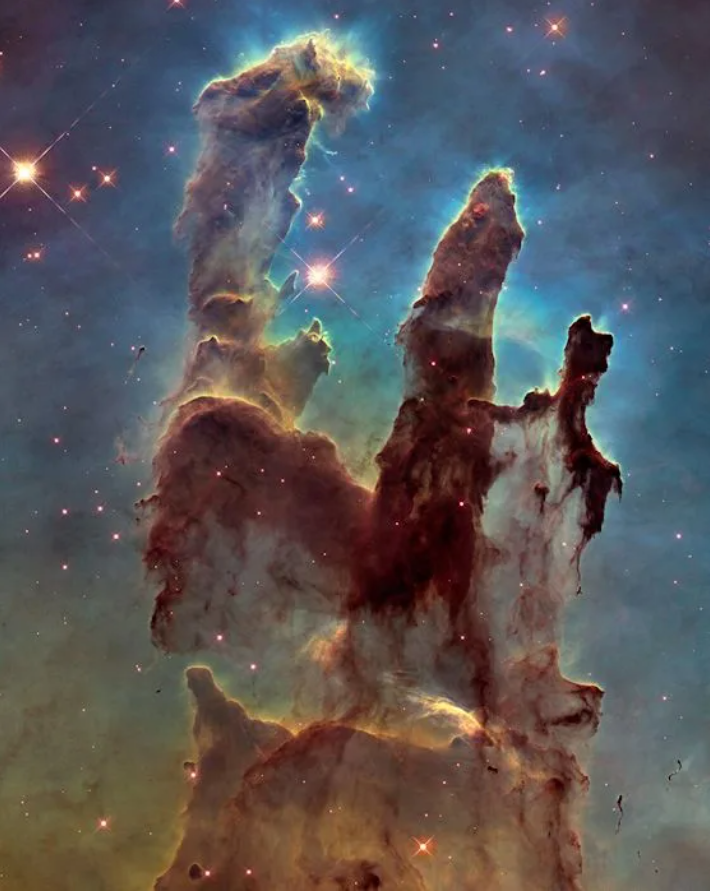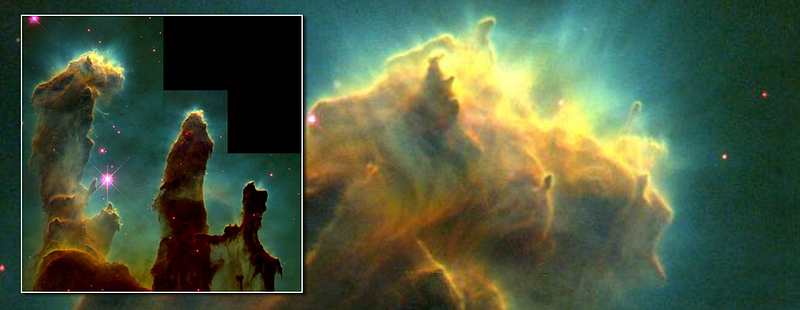Exploring the Cosmic Wonders of the Pillars of Creation
Written on
Chapter 1: A Cosmic Icon Reimagined
Three decades ago, the Hubble Space Telescope unveiled the Pillars of Creation, which quickly became one of the most celebrated images in the realm of astronomy. This breathtaking photograph captured our fascination and the grandeur of the cosmos with unprecedented clarity. NASA and its partners remain captivated by these towering clouds of gas and dust, a vast region of space that serves as a cradle for new stars.
Recently, scientists have released an exhilarating new 3D visualization that allows viewers to fly through these majestic pillars. Before diving into the video, let’s provide a bit of context:
This visualization merges data from the Hubble Space Telescope and recent observations from the James Webb Space Telescope, resulting in what has been termed "the most detailed multiwavelength movie" of the Pillars of Creation, also known as the Eagle Nebula (M16).
Frank Summers, the principal visualization scientist at the Space Telescope Science Institute (STScI) in Baltimore, elaborates, "As viewers soar through the pillars, they can appreciate their three-dimensional structure and observe the differences in appearance between Hubble's visible-light images and Webb's infrared views."
Hot young stars within and around the Pillars of Creation emit powerful interstellar winds and intense radiation, actively sculpting the pillars and even disintegrating them in real time. The entire scene spans several light-years, exceeding the distance from our sun to its nearest stellar neighbor.
To truly appreciate this cosmic spectacle, take a moment to watch the visualization below, highlighting critical aspects of star formation:
As viewers approach the central pillar, they will notice an infant protostar glowing bright red in infrared light at its peak. Near the top of the left pillar, a diagonal jet of material is ejected from a newly-formed star, which remains invisible to the naked eye. Finally, at the tip of one of the left pillar's protruding "fingers," a newly ignited star shines brilliantly.
Chapter 2: New Insights into Star Formation
“When we integrate observations from NASA’s space telescopes across various wavelengths, we deepen our understanding of the universe,” stated Mark Clampin, director of NASA’s Astrophysics Division. “The Pillars of Creation continue to reveal new insights that refine our knowledge of star formation. With this new visualization, we invite everyone to explore this rich and captivating landscape from a fresh perspective.”
The nebula has undergone numerous observations over the past thirty years, each revealing additional secrets. In 2015, Hubble revisited the pillars, exposing another dimension of the Pillars of Creation: they are also pillars of destruction. A narrow jet emerging from a newborn star was observed stretching an astonishing 60 billion miles into space, indicating it travels outward at an impressive speed of 450,000 mph (724,200 kph).
Evidence of material being sandblasted away into space can also be seen at the top of the left pillar.

According to Paul Scowen from Arizona State University, “The bluish haze surrounding the dense edges of the pillars is material being heated and evaporating into space.” The release of that 2015 image demonstrated that scientists had captured the pillars at a unique and fleeting moment in their evolution.
A nod to Hubble's original image of the Eagle Nebula is warranted, as scientists discovered knots of gas and dust that symbolize nascent stars, referred to as evaporating gaseous globules (EGGs).

Jeff Hester of Arizona State University, who played a key role in creating the iconic Hubble image, remarked, “For many years, astronomers have speculated about the processes that govern star sizes. In M16, we appear to be witnessing one of those processes in action.”
Today, scientists—and indeed, all of us—can observe even more star formation as it unfolds before our eyes. Interestingly, astronomers believe our own sun likely emerged from a tumultuous stellar environment much like this one, offering a glimpse into the cosmic birthplace that set the stage for our own existence.

The second video titled "The Pillars of Creation and the Interplay of Stars and Dust" provides further insights into this stunning cosmic phenomenon.